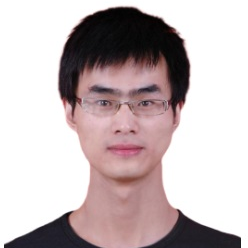Image/Video Restoration Based on Deep Learning and Its Application in Sensing
A special issue of Sensors (ISSN 1424-8220). This special issue belongs to the section "Sensing and Imaging".
Deadline for manuscript submissions: closed (31 December 2023) | Viewed by 11821
Special Issue Editors
Interests: image/video restoration; image/video understanding; image/video coding
Special Issues, Collections and Topics in MDPI journals
Interests: image fusion; image restoration; machine learning; sparse optimization modeling; tensor decomposition; numerical PDE for image processing
Special Issues, Collections and Topics in MDPI journals
Interests: image/video restoration; deep learning; medical image analysis
Special Issue Information
Dear Colleagues,
High-quality images/videos are critical for various practical applications, such as remote sensing, medical imaging, and intelligent monitoring. However, the images/videos captured in real scenarios may suffer from noise, blur, compression artifacts, etc., degrading visual quality and decreasing the accuracy of content analysis (e.g., object detection and segmentation). The images/videos obtained in bad weather, such as foggy and rainy days, also face these challenges. Image/video restoration, including super resolution, denoising, deblurring and dehazing, aims to recover high-quality outputs from low-quality observations, thus obtaining better visual effects and benefiting subsequent analysis. Therefore, it has been a focus of image/video processing and numerous approaches have been developed. In particular, deep learning-based models have significantly improved restoration performance in recent years.
The goal of this Special Issue is to present recent advances in deep learning-based image/video restoration techniques and their applications in sensing. Authors are welcome to submit research papers, as well as literature reviews, related to image/video restoration, including but not limited to super resolution, denoising, deblurring, compression artifact reduction, deraining, dehazing, restoration-assisted object detection and segmentation, etc.
Dr. Honggang Chen
Prof. Dr. Liang-Jian Deng
Dr. Xiaole Zhao
Dr. Yuwei Jin
Guest Editors
Manuscript Submission Information
Manuscripts should be submitted online at www.mdpi.com by registering and logging in to this website. Once you are registered, click here to go to the submission form. Manuscripts can be submitted until the deadline. All submissions that pass pre-check are peer-reviewed. Accepted papers will be published continuously in the journal (as soon as accepted) and will be listed together on the special issue website. Research articles, review articles as well as short communications are invited. For planned papers, a title and short abstract (about 100 words) can be sent to the Editorial Office for announcement on this website.
Submitted manuscripts should not have been published previously, nor be under consideration for publication elsewhere (except conference proceedings papers). All manuscripts are thoroughly refereed through a single-blind peer-review process. A guide for authors and other relevant information for submission of manuscripts is available on the Instructions for Authors page. Sensors is an international peer-reviewed open access semimonthly journal published by MDPI.
Please visit the Instructions for Authors page before submitting a manuscript. The Article Processing Charge (APC) for publication in this open access journal is 2600 CHF (Swiss Francs). Submitted papers should be well formatted and use good English. Authors may use MDPI's English editing service prior to publication or during author revisions.
Keywords
- image/video restoration
- deep learning
- super-resolution and video frame interpolation
- denoising and compression artifact reduction
- deblurring
- dehazing and deraining
- restoration-assisted image/video analysis









